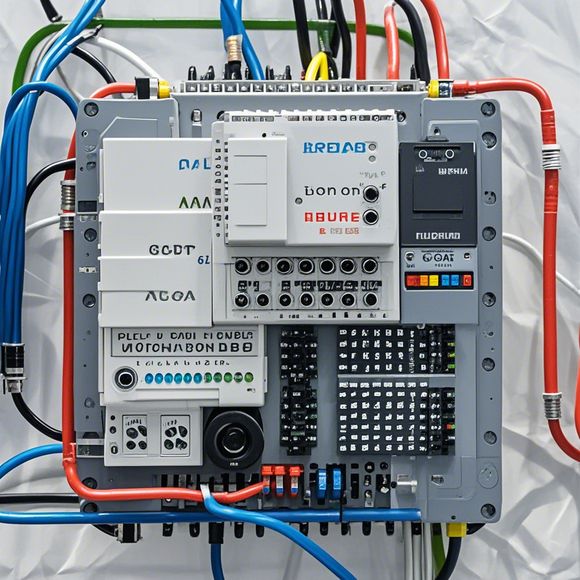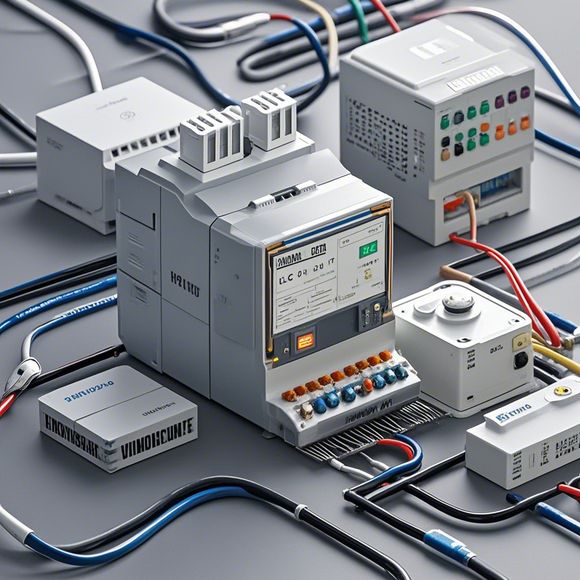PLC Controller: The Backbone of Modern Manufacturing
As we delve into the realm of modern industrial production, a crucial component that stands out is the Programmable Logic Controller (PLC). At its core, the PLC serves as the backbone of manufacturing operations, providing an unparalleled level of control and efficiency. In this article, we'll explore how the PLC operates, its key features, and why it remains a top choice for many industries.

At its heart, the PLC is a powerful computing device designed to manage complex systems with minimal human intervention. Unlike traditional mechanical controllers, which rely on physical switches and relays, the PLC incorporates advanced logic circuitry, microprocessors, and memory storage to process data and execute instructions. This allows for a high degree of flexibility and adaptability, enabling the PLC to respond to changing conditions and optimize production processes accordingly.
One of the most significant advantages of the PLC is its ability to communicate with various types of sensors and actuators. Whether it’s temperature sensors, pressure gauges, or motors, there are numerous devices available today that can be connected to a PLC. This enables the system to monitor and control multiple aspects of production, ensuring that every aspect is functioning optimally. Moreover, the PLC can also interface with other computer-based systems, such as MES (Manufacturing Execution System), to integrate all aspects of production into a single, cohesive workflow.
Another critical feature of the PLC is its modular design. Instead of being one monolithic unit, PLCs are built in a modular fashion, allowing for easy customization and expansion. This means that manufacturers can easily add new functions or upgrade existing systems based on their specific needs. Additionally, the PLC’s modularity also makes it easier to integrate new technologies, such as artificial intelligence or machine learning algorithms, without having to redesign the entire system.
One common misconception about PLCs is that they are only suited for small-scale applications. However, this couldn’t be further from the truth. PLCs have become a staple in large-scale manufacturing operations, including factories producing cars, airplanes, and even smartphones. The reason for their widespread adoption lies in their ability to provide a reliable and efficient means of managing complex systems. By leveraging their advanced logic circuitry and memory storage capabilities, PLCs can handle vast amounts of data and perform complex calculations in real-time. This not only improves productivity but also reduces downtime and maintenance costs.
Furthermore, the PLC has revolutionized the way we approach safety and reliability in manufacturing. Thanks to their built-in safety features, such as overload protection and emergency stop mechanisms, PLCs ensure that production processes remain safe and secure. Additionally, by using standard protocols and communication channels, PLCs allow for greater interoperability between different systems, reducing the likelihood of errors or breakdowns.

However, while the PLC is undoubtedly a game-changer in the world of manufacturing, it's essential to consider some potential drawbacks. One common concern is the cost of implementing a PLC system. While it may seem like a significant investment upfront, the long-term benefits of reduced downtime, improved efficiency, and increased reliability often make the investment worthwhile. Additionally, PLCs require specialized training and expertise to operate effectively. Therefore, companies must invest in proper training programs and support services to ensure that they can fully leverage the benefits of the PLC.
Another potential issue is the complexity of programming and configuration. While PLCs are highly flexible and customizable, they can also be difficult to program or configure. This requires careful consideration of factors such as hardware compatibility, software integration, and user preferences. To avoid potential issues down the line, it's important for companies to work with experienced professionals who can help guide them through the process of configuring and programming a PLC system.
In conclusion, the PLC controller plays a crucial role in modern manufacturing. Its modular design, advanced logic circuitry and memory storage capabilities, and ability to communicate with various types of sensors and actuators make it an ideal tool for controlling complex systems. As the demand for automation in the industry continues to grow, the PLC will continue to play an increasingly important role. So next time you're considering investing in a new manufacturing solution, consider the PLC as a powerful tool that can help streamline your processes while improving efficiency and safety.
Content expansion reading:
Articles related to the knowledge points of this article:
PLC (Programmable Logic Controller) Control System Basics
The Role of Programmable Logic Controllers (PLCs) in Foreign Trade Operations
Connecting a PLC Controller to Your Computer
PLC Controllers: A Comprehensive Guide to Understanding Their Prices